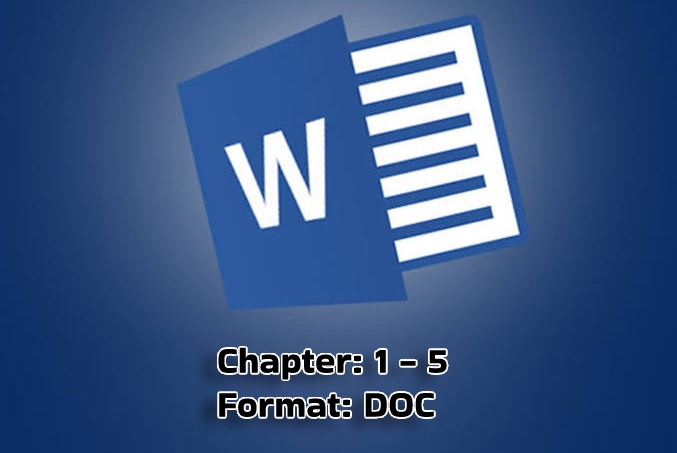Description
CHAPTER ONE
1.0 INTRODUCTION
1.1 BACKGROUND OF THE STUDY
Nowadays, human apply all of its potentiality to consume more. The result of this
high consumption is nothing unless reducing the initial resources and increasing
the landfill. In recent times, human from the one hand is always seeking broader
sources with lower price and from the other hand is following the way to get the
rid of the wastes. The waste today can be produced wherever humans footprints be
existed, and remind him that they have not chosen the appropriate method for
exploitation of the nature At the present time, the possibility of utilizing the
renewable resources such as solar, wind, geothermal has been provided for us more
than before, and development of this science is making progress. But those
energies can be chosen as one of the renewable and alternative energies instead of
fossil fuels which are cheap as possible and have fewer environmental impacts.
Since no attention to economic issues lead to that the use of these energies be just
for groups dedicated to specific segments of society.
Whilst many renewable energy projects are large-scale, renewable technologies
are also suited to rural and remote areas, where energy is often crucial in human
development. With population growth in today’s world, the need to the building
has increased and to respond to this demand, the countries tend to use the
industrial building materials and decline the use of indigenous and traditional
materials.
These factors in spite of increasing the energy consumption in the industry
section; they can also raise the cost of house and are considered as the barrier
for users to obtain the basic needs of the life. The problem of users is losing the
power and ability of design and building their own homes by themselves. Two
factors that prevent aboriginal people from building their homes are high cost
building materials and labor and also maybe long transportation. One of the
solutions for this problem can be Solve In following Manner.
Use of affordable recycled materials in buildings
Using the method of regenerating through proper education to
people. In the past, the glass was common in packing some foods such as
milk and etc. They could be returned to the factory for using again for the
same purpose. But now by changing the human’s disposal culture, glass
bottles have been replaced by plastic bottles, as they have increasingly
become one of the substances of destruction of the landfills because they
decompose in a long time. Two alternative solutions against the plastic
bottle disposal are recycling and reusing process. Recycling needs additional
energy to treat the materials for producing something usable. Moreover, the
recycling process produces wastewater and air pollutants. So the best
solution is reusing for which no additional energy is required and does not
contribute to pollution. Indeed, when we reuse junk, we are helping to save
the obtained energy which would otherwise be wasted. It is focused on not
only the financial aspect but also the environmental aspect.
Plastics are produced from the oil that is considered as nonrenewable resource.
Because plastic has the insolubility about 300 years in the nature, it is
considered as a sustainable waste and environmental pollutant. So reusing or
recycling of it can be effectual in mitigation of environmental impacts relating to
it. It has been proven that the use of plastic bottles as innovative materials for
building can be a proper solution for replacement of conventional materials. The
use of this material has been considered not only for exterior walls but also for
the ceiling of the building. This work is to investigate the using of plastic bottles
as municipal wastes in the buildings, the key and positive characteristics of this
product and the benefits obtained by using it in building. It also intends to
compare the characteristics of some construction materials such as brick,
ceramic and concrete block with bottle panel.
Plastic have many good characteristics which include versatility, light-ness,
hardness, and resistant to chemicals, water and impact. Plastic is one of the most
disposable materials in the modern world. It makes up much of the street side
litter in urban and rural areas. It is rapidly filling up landfills as choking water
bodies. Plastic bottles make up approximately 11% of the content landfills,
causing serious environmental consequences. Due to the consequences some of
the plastic facts are as follow:
More than 20,000 plastic bottles are needed to obtain one ton of plastic.
It is estimated that 100 million tons of plastic are produced each year.
The average European throws away 36 kg. of plastics each year.
Some plastic waste sacks are made from 64% recycled plastic.
Plastics packaging totals 42% of total consumption and every year little of
this is recycled.
According to ENSO Bottles, in the 1960’s plastic bottle production has been
negligible but over the years there was an alarming increase in bottles produced
and sold but the rate of recycling is still very.
Plastics are produced from the oil that is considered as non-renewable resource.
Because plastic has the insolubility about 300 years in the nature, it is considered
as a sustainable waste and environmental pollutant. So reusing or recycling of it
can be effectual in mitigation of environmental impacts relating to it. It has been
proven that the use of plastic bottles as innovative materials for building can be a
proper solution for replacement of conventional materials. The use of this
material has been considered not only for exterior walls but also for the ceiling of
the building. The objective of this work is to investigate the key and positive
characteristics of this product and the benefits obtained by using it in building. It
also intends to compare the characteristics of some construction materials such as
brick, ceramic and concrete block with bottle. One can use solar bomb (bottle
filled with bleaching powder solution) will be fitted on the roof for light source.
1.2 PROBLEM STATEMENT
Now-a-days, the major problem of human being is the power and ability of
design and building their own homes by themselves. Two factors that prevent
aboriginal people from building their homes are high cost building materials (such
as brick, ceramic and concrete block) and labor and also maybe long
transportation. One of the solutions for this problem is to use recycle plastics for
construction of materials such as brick, ceramic and concrete block with bottle.
1.3 AIM AND OBJECTIVES OF THE STUDY
The main aim of this study is to investigate the practice of the use of Recycled
Plastic Bottles (RPB) for a sustainable community-based housing project in Ogun
State Nigeria. The objectives are:
i. to investigate the application of plastic bottles which is one of the urban
waste in building construction
ii. that how it can lead to sustainable development .
iii. It also mentions some ways for self-standing and insulating them in thermal
and sound point of view and some positive points which this material have
versus others.
1.4 SIGNIFICANCE OF THE STUDY
The use of recycle plastics provides a cheap means of building house because of
the availability of the plastics bottles in our environment. This research work
will throw more light on the best techniques for constructing building
materials such as brick, ceramic and concrete block. This study will also be
designed to be of immense benefit to all the consumers of plastic drinks in
that it will open their eyes to another useful way of using the plastic bottle.
1.5 LIMITATION OF THE STUDY
As we all know that no human effort to achieve a set of goals goes without
difficulties, certain constraints were encountered in the course of carrying out this
project and they are as follows:-
Difficulty in information collection: I found it too difficult in laying hands of
useful information regarding this work and this course me to visit different
libraries and internet for solution.
Financial Constraint: Insufficient fund tends to impede the efficiency of the
researcher in sourcing for the relevant materials, literature or information and in
the process of data collection (internet, questionnaire and interview).
Time Constraint: The researcher will simultaneously engage in this study with
other academic work. This consequently will cut down on the time devoted for
the research work
1.6 RESEARCH METHODOLOGY
In the course of carrying this study, numerous sources were used which most of
them are by visiting libraries, consulting journal and news papers and online
research which Google was the major source that was used.
1.7 PROJECT ORGANISATION
The work is organized as follows: chapter one discuses the introductory part of
the work, chapter two presents the literature review of the study, chapter three
describes the methods applied, chapter four discusses the results of the work,
chapter five summarizes the research outcomes and the recommendations.

